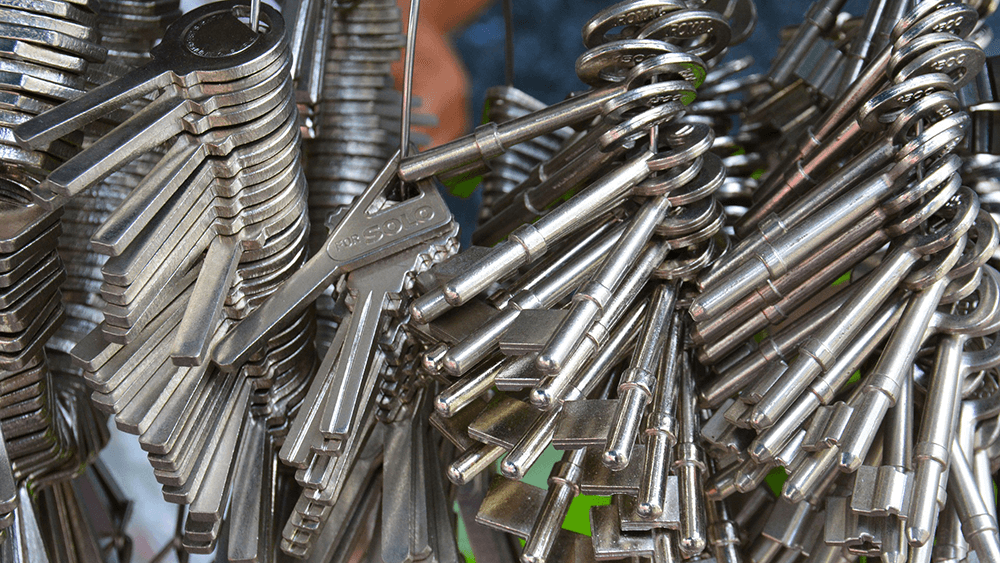
Apr 27, 2020 | Immunology, Research, Transplantation
by Peter Wang
When I started college at UChicago, I thought “This is going to be the best four years of my life! Don’t waste any of it!” I would try out for water polo, make lifelong friends, and jump into research. I wanted to become a doctor in the future and was eager to get my hands dirty.
The spring of my first year, I joined the lab of Maria-Luisa Alegre, MD, PhD. Her lab studies the responses of T-cells, the guardians of the body against foreign invaders, in solid organ transplantation: T-cell tolerance to donor grafts, the impact of infection and inflammation on anti-graft immunity, and interactions between the host immune system against the transplant and microbiota at different body sites.
Roughly 40,000 transplants were performed last year, and over 100,000 people are still on the national transplant waiting list. What the Alegre lab uncovers about the immune mechanisms involved in transplant rejection and tolerance has important implications for the health of these transplant recipients.
My first year as a scientist went by quickly, like when you’re driving somewhere and you lose your sense of time. I found my own groove, balancing chemistry classes in the morning with mouse experiments in the afternoon, not to mention lots and lots of pipetting. I felt I was doing something important, and life couldn’t be better.
Then my life—everybody’s lives—hit a massive speed bump. In March 2020, we were faced with the looming COVID-19 pandemic. My daily routine quickly shifted to life under lockdown: online classes, no labs, stress and anxiety and facing the anti-climactic reality that all I could do to help was to stay indoors. I had so much to look forward to that month; not only exciting experiments, but also a water polo tournament in Des Moines—vanished.
This pandemic has undoubtedly affected the lives of millions of students, small business owners, and brave healthcare workers on the front lines. But I get to give you my perspective, that of the cohort I am joining—scientists—the people best positioned to get us out of this mess.
Scientists in immunology are all motivated by the desire to understand health and disease and improve human health. The more we know about the immune system, the better outcomes we can provide for patients experiencing cancer, organ failure, infection, and allergy.
To advance knowledge, many immunologists utilize unique mouse models. In studying transplantation, Dr. Alegre suggests that “mice are relatively easy to alter genetically, offering the smallest animal model in which it is still possible to transplant an organ (if you are a skilled microsurgeon) and which allows mechanistic investigations into how a given immune gene can lead to graft rejection or graft tolerance. These genes can then become therapeutic targets and improve patient outcomes.”
In the Alegre lab, we use mouse models to study T-cell responses following skin and heart transplantation. Many of our mice are transgenic; like genetically altered fruits or vegetables, our mice have T-cells or tissues engineered to express or lack certain genes and proteins. We use these as donors or recipients of transplanted organs or as sources of transplant-reactive T cells to understand the immune response to the graft.
Because of the limitations in the number of complex surgeries that can be performed in a day, we often plan and perform multiple mouse experiments simultaneously. In her lab, Alegre says that “many of our experiments look at the maintenance phase of transplantation tolerance, 30-60 days after transplantation. Our microsurgeon usually generates a continuous stream of transplanted mice of the various gene backgrounds to have a lineup of experimental mice that have already reached the desired time point.”
Confronted with the necessity to evacuate the lab, we knew there would be few, if any, people left to care for the mice. Soon, universities and labs across the world would ask researchers to wrap up all ongoing experiments and think long and hard about the mice they needed, freeze the embryos of rare and special strains, prioritize the young pups of unique strains, and in many cases, cull the rest.
“The week in which we had to shut down the lab and dramatically reduce our mouse colony was distressing,” Alegre said. “In the span of a week, we erased years of work, prioritized irreplaceable strains and sacrificed all non-essential animals. Mentoring experimental design, methods and data interpretation is obviously much less effective when bench experiments cannot be performed, impacting undergraduate and graduate education.”
Our final in-person lab meeting was heartbreaking. We prioritized our mice: the young and pregnant were spared, with the hopes of ramping up breeding once the lab shutdown is over. Alegre estimates that this crisis has caused a “setback of about a year to be where we were before the lab shutdown. Publication of our findings will be delayed until we can ramp up transplantation and get to the point where we can repeat experiments and generate new data.”
As we adjust to this newfound reality, many at UChicago and the Duchossois Family Institute are confident that our life-saving work will continue, but at a different time and pace. When asked about the future, Alegre expressed that “we scientists are resilient by nature, however we’ll miss the thrill of new discovery and the quiet satisfaction of doing something useful that advances scientific knowledge.” We’ve shifted to lab meetings and journal clubs via Zoom, and I am writing about our work now in a different way—for the public rather than in scientific journals for other researchers. But the sacrifice and isolation in the age of social distancing is one of our important duties as citizens, and saving lives is what I value most.
Peter Wang is a second-year undergraduate student in The College.

Sep 27, 2019 | Food Allergies, Immunology, Microbiome, News Roundup, Research
A selection of health news from the University of Chicago and around the globe curated just for you.
Will these startups help biotech take root in Chicago?
Tom Gajewski is stepping into the spotlight with Pyxis Oncology, a cancer-therapy startup. He and co-founders John Flavin and David Steinberg raised $22 million to launch the spinout from his lab. (Crain’s Chicago Business)
Can gut bacteria heal food allergies?
How manipulating the microbiome could reverse and prevent peanut allergies and more. Cathryn Nagler featured. (Elemental by Medium)
Study finds an unexpected link between farming and immune system evolution
A new study by University of Chicago Medicine genetic researcher Luis Barreiro found the immune systems of hunter-gatherers showed more signs of positive natural selection, in particular among genes involved in the response to viruses. (phys.org)
Wash U team finds the ‘signature’ of guts that don’t get c. diff
Researchers have found the molecular signature of a healthy gut microbiome—the kind of bacterial community that keeps Clostridium difficilein check even in the aftermath of antibiotic treatment. (Futurity)
With new grants, Gates Foundation takes an early step toward a universal flu vaccine
Scientific teams from inside and outside the world of influenza research have been awarded funding to try to unlock mysteries that could provide the foundation for a future universal flu vaccine. Patrick Wilson featured. (STAT)
Human breast milk may help babies tell time via circadian signals from mom
The composition of breast milk changes across the day. Researchers believe this “chrononutrition” may help program infants’ emerging circadian biology. (The Conversation)
Just four nights with less sleep can alter fat storage
Restricting sleep for just four days alters how the body metabolizes fats and changes how satisfying meals seem, according to a new study with 15 healthy men. (Futurity)

Nov 21, 2018 | Immunology, Microbiome, Research
by Elise Wachspress
If you think the invention of the microscope was a pivotal moment in the development of biological knowledge, you might be pretty impressed with the flow cytometer.
This technology allows scientists to “see” an entire stream of individual cells, detecting the features of each as they rush single file through a tiny tube. A laser (or sometimes several) shines through or bounces off the cells as they pass by. Depending on the specific kinds of fluorescent indicators applied, flow cytometry can efficiently characterize 30 or more factors in hundreds of thousands of individual cells and even sort them as they surge through the tube.
For scientists studying the microbiome, the immune system, and their intersection, flow cytometry—we celebrate its 50th anniversary this year—was a breakthrough. The tool provides an efficient way to both distinguish the various bacteria in a sample and identify human immune cells and the particular antibodies they carry.
Last fall, a team led by Jeffrey Bunker (a student in the University of Chicago’s revered Medical Scientist Training Program) and his mentor, Albert Bendelac, MD, PhD (A.N. Pritzker Professor of Pathology) used flow cytometry to understand an important interaction between the gut and the bacteria that live there.
The gut is the source of large quantities of immunoglobulin A (IgA), the most abundant antibody protein in mammals. In our intestines, where we depend on a diverse community of bacteria to digest our food and make important by-products like vitamins, IgA sticks to the surfaces of the microbes, allowing them do their work while keeping them from settling in on the mucous membranes that line the gut. These membranes are the critical barrier that separates the energy furnace in our intestines from the rest of our bodies.
But how do IgA proteins—which defang bacteria with a kind of key-in-lock technique—recognize the many different kinds of bacterial locks and latch so specifically on to each? Thanks to flow cytometry, the team could identify the many types of bacteria involved, so they knew the complicated job IgA was up against.
What they found was that IgA cells in the gut were “polyreactive”: they could clasp very specifically onto many different types of bacteria. This Swiss-army-knife ability was not the result of intervention by other parts of the immune system or hyperactive mutations within the IgA cells themselves. Even changes in diet (and the presumed alterations in the balance of bacteria induced by these changes) did not significantly affect their ability as quick-change artists.
This research demonstrated that IgAs, part of our adaptive immune system, actually have the innate—born in—ability to recognize individual types of bacteria, even new ones, and do what they need to do to create the right latch. The takeaway is that the bacteria in our guts and our own immune systems have clearly been evolving together, probably for millennia, and that the immune systems of new humans have innate ability to recognize “old” bacteria—those that have been fellow travelers with the human race for generations.
This is just one more bit of evidence that none of us are truly individuals. Each human being is a colony of species living together in community—communities with very long histories and intense cultures—and we’re wise to go with the flow.
This past summer, Bunker and Bendelac went on to publish a major review article on IgA biology for the journal Immunity. There they presented a new framework integrating two distinct types of immunity that protect the gastrointestinal mucus membranes: the polyreactive IgA described above and much more “bespoke” key-and-lock responses to pathogens and vaccines provided by other kinds of immune cells.
Elise Wachspress is a senior communications strategist for the University of Chicago Medicine & Biological Sciences Development office

Nov 9, 2018 | Medicine, Research
by Kate Dohner
One in three Americans uses herbal therapies. Yet less than one in 3,000 scientific studies focus on this increasingly popular therapy.
Researchers at the Tang Center for Herbal Medicine Research at the University of Chicago are changing that. Established in 2000 through generous donations from the foundations of Cyrus Tang, the Tang Center seeks to uncover the benefits and potential dangers of herbal therapies.
“The majority of prescription medications are derived from natural products,” explained Chun-Su Yuan, MD, PhD, Cyrus Tang Professor and director of the Tang Center. “At the Tang Center, we apply a scientific approach to identify new herbal therapies and gain a better understanding of how they might help patients.”
Yuan and his colleagues were among the first to point out that—because most herbal medicines are taken by mouth (as capsules or teas)—they must be digested and absorbed by the microbiome, the trillions of bacteria that live in each person’s gut.
One of the most popular herbal medicines worldwide, ginseng has been used for centuries to treat a variety of ailments. In recent years, it was discovered that after ginseng is consumed, its original compounds are transformed by certain gut bacteria into new substances called metabolites—one of which, “compound K,” has significant cancer prevention potential.
Yuan and his team are studying ginseng’s ability to fight colorectal cancer, one of the most common cancers worldwide. This work, previously supported by a $6 million grant from the National Institutes of Health, led to an important discovery: When ginseng was fed to mice with colorectal cancer, it not only significantly reduced inflammation in the colon but also restored the bacterial community to a healthy state.
In a related study, Yuan’s team examined how American ginseng (one of the main species of ginseng) affects the microbiomes of people who eat different diets. They studied six volunteers in the Chicago area—half of whom regularly ate an Asian diet of largely vegetables and rice, and half who ate a high-fat, Western diet. Each of the participants took ginseng capsules by mouth for seven days.
The researchers found that those on the Western diet had much higher levels of cancer-fighting compounds compared to those on the Asian diet. This preliminary study suggests ginseng may be even more beneficial for those who eat a Western diet.
“This was not what we expected,” offered Yuan. “However, the high-fat diet appears to affect the composition of gut bacteria, and in turn, allows for better absorption of ginseng’s anti-cancer compounds.”
Looking ahead, Yuan seeks to study ginseng’s influence on the microbiome in greater depth, eventually moving into clinical trials. But more animal studies are needed first.
“The general public is very enthusiastic about dietary supplements and herbal medicine,” said Yuan. “With continued research, we hope to provide unbiased scientific findings to help inform the medical community, patients, and health-conscious consumers.”
Kate Dohner is a senior writer for the University of Chicago Medicine & Biological Sciences Development office.

Nov 8, 2018 | Lung Disease, Research
by Elise Wachspress
Stop for a minute and breathe, just breathe. Now envision what your lungs are doing.
In your mind’s eye, do you see big pink balloons filling and deflating?
Close. What’s really going on is hundreds of millions of tiny little pink balloons filling and deflating—ten to twenty times a minute, even more often for babies and small children. Your lungs actually look more like foamy, pulsating soap bubbles than balloons.
In between these bubbles—the alveoli—is a flexible web that allows the little sacs to expand and contract, taking in air, grabbing the oxygen, and dispelling the carbon dioxide waste products.
Unless the web starts to harden. That’s what happens in the case of interstitial lung diseases (ILD). Alveolar expansion gets more and more difficult, until patients begin to feel their lungs are made of concrete. The damage is usually progressive and irreversible. In some cases, certain medications can slow ILD, and some people may be candidates for lung transplants. Otherwise, it’s not hard to see where this condition leads. When you can’t breathe, you can’t live.
ILD can be caused by exposure to hazardous materials like asbestos. Sometimes autoimmune diseases, like rheumatoid arthritis, can trigger the disease. Unfortunately, in most cases, especially for a subset of the disease called idiopathic pulmonary fibrosis (IPF), the cause is unknown.
Physician-scientists at the University of Chicago are working to change that—because if you know the causes of disease, you are many steps closer to resolving it. This quest is particularly critical right now, because over the last three decades, mortality from ILD has doubled in the US.
UChicago, one of the few centers of excellence for treating the disease, draws many of the top people interested in studying it. A large team that included clinician-scientists, researchers, and radiologists from UChicago and NorthShore University HealthSystem, recently found some powerful indicators in predicting ILD outcomes—findings which will not only help physicians fine-tune treatments, but also provide clues of the disease’s mechanism.
One indicator involved the lymph nodes, the organs that 2018 Nobel Prize winner Jim Allison describe as like Rick’s Place in Casablanca: where all cells—the good guys, bad guys, reporters, and soldiers—go to hang out.
The team, led by Deji Adegunsoye, Jonathan Chung, Mary Strek, and Anne Sperling, found that when the lymph nodes tucked between the lungs were enlarged—a condition visible on a CT scan—patients had much worse lung function and significantly increased mortality.
They also found these patients had characteristic imbalances in cells and substances associated with the immune system, some of which could be found through a blood test. In fact, patients with large numbers of one specific interleukin—a protein generated by the immune system—circulating in their blood had the worst survival rates.
Taken together, these factors are likely biomarkers of the patient’s prognosis. Both can be monitored via minimally invasive testing, as opposed to the lung biopsies currently used.
Patients who show neither of these indicators likely have a truly different form of ILD, which not only means longer survival, but may also be differentially treatable with certain immunological drugs.
This latest research is only one strand of the many ways UChicago scientists are fighting ILD. The involvement of these immunological factors seems to corroborate what many team members have suspected through years of clinical work: that a variety of triggers—both chemical and microbial—may set up an immune response that attacks the lungs. IPF patients have often reported exposure to substances like organic solvents, stone dust, and/or mold. The Chicago team is looking for funding for a dedicated occupational health consultant to extensively document patients’ life histories in hopes of identifying disease triggers. As with a similar discovery that asbestos exposure causes the universally deadly mesothelioma, they hope to make ILP preventable.
The team is also working to significantly increase their biobank of lungs, which are exceptionally fragile and require a very specialized storage regimen. The lymph node findings were only possible because of the intense support of UChicago’s technical/biobanking staff (who must often respond on a moment’s notice when a patient undergoes a lung transplant) and strong collaboration with NorthShore. The team hopes UChicago can become a regional center of lung biobanking, to drive this kind of research.
And with the help of molecular engineers, the team is also working to develop microfluidic tools to drive that lung research and develop new drugs to address the immunological effects—tools and drugs that can be commercialized for use across the world, with the help of the Polsky Center for Entrepreneurship and Innovation.
For too long, interstitial pulmonary disease, especially IPF, have been a death sentence. It’s way past time for a change.
Elise Wachspress is a senior communications strategist for the University of Chicago Medicine & Biological Sciences Development office

Oct 31, 2018 | Immunology, Microbiome, News Roundup, Research
A selection of health news from the University of Chicago and around the globe curated just for you.
Three UChicago Scientists Earn NIH Grants to Pursue Innovative Research
Three UChicago scientists—including Jun Huang, who studies the immune system and its role in treating infectious diseases and cancer—each have been awarded $1.5 million grants over five years from the National Institutes of Health in support of their innovative, high-impact biomedical research. (UChicago News)
Noah’s Ark for Microbes
A team of researchers, including Jack Gilbert, is calling for the creation of a global microbiota vault to protect the long-term health of humanity. (Science)
These 19 MassChallenge Startups Just Won $1.65M
Nineteen early-stage startups, including Oxalo Therapeutics, won a total of $1.65 million at Wednesday night’s MassChallenge awards ceremony. (BostInno)
Polsky Opens its High-Profile Accelerator to Alumni Startups
UChicago’s New Venture Challenge, ranked among the top accelerator programs in the country, is launching an alumni track as part of its annual startup competition. (American Inno)
Meet the Carousing, Harmonica-Playing Texan Who Just Won a Nobel for his Cancer Breakthrough
This year, the Nobel Prize was awarded to James Allison, PhD—a colleague, friend, and “The Checkpoints” bandmate of Tom Gajewski—for research that laid the groundwork for the development of checkpoint inhibitor immunotherapies. (WIRED)









